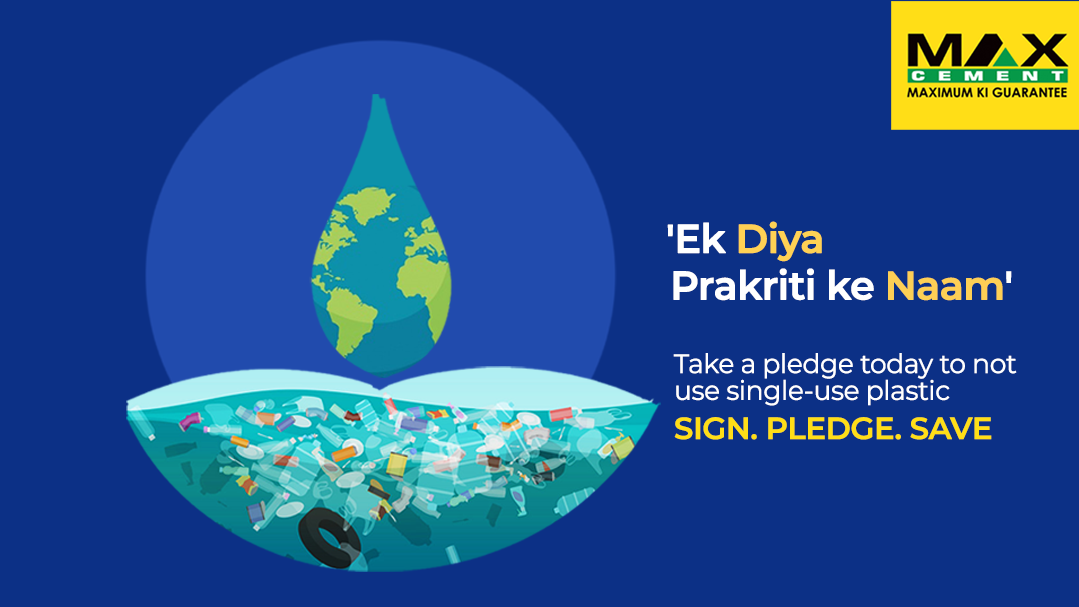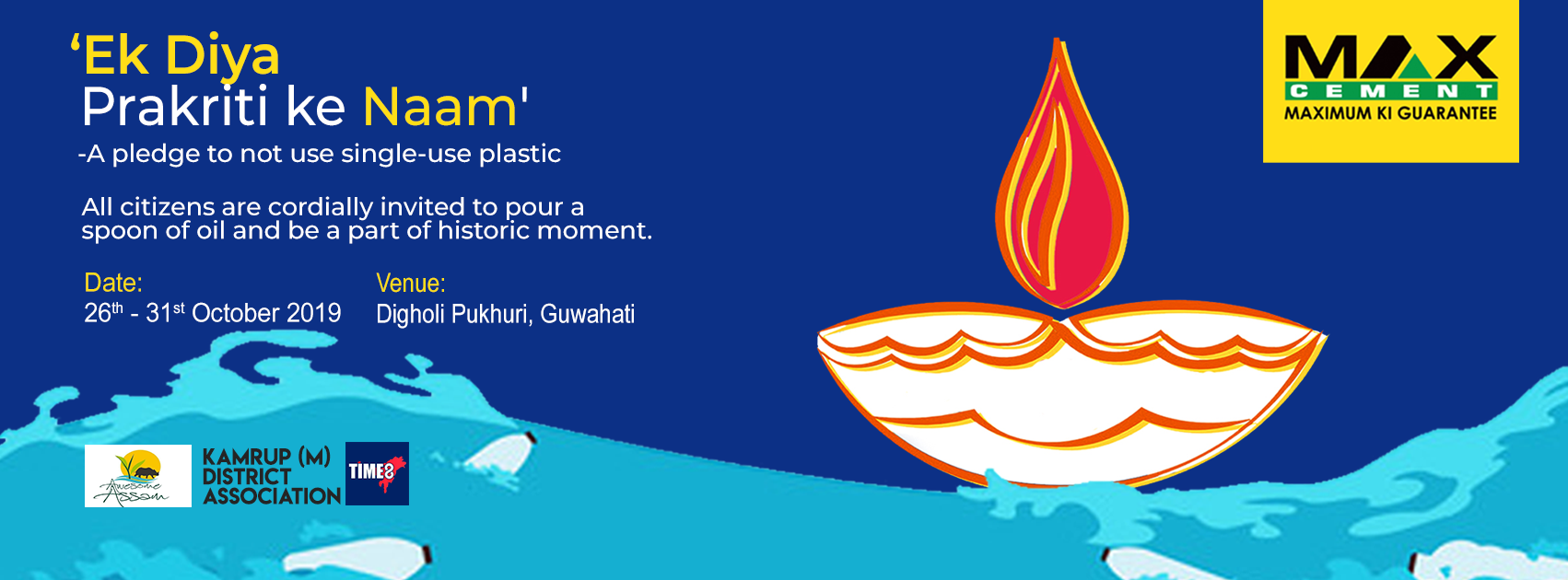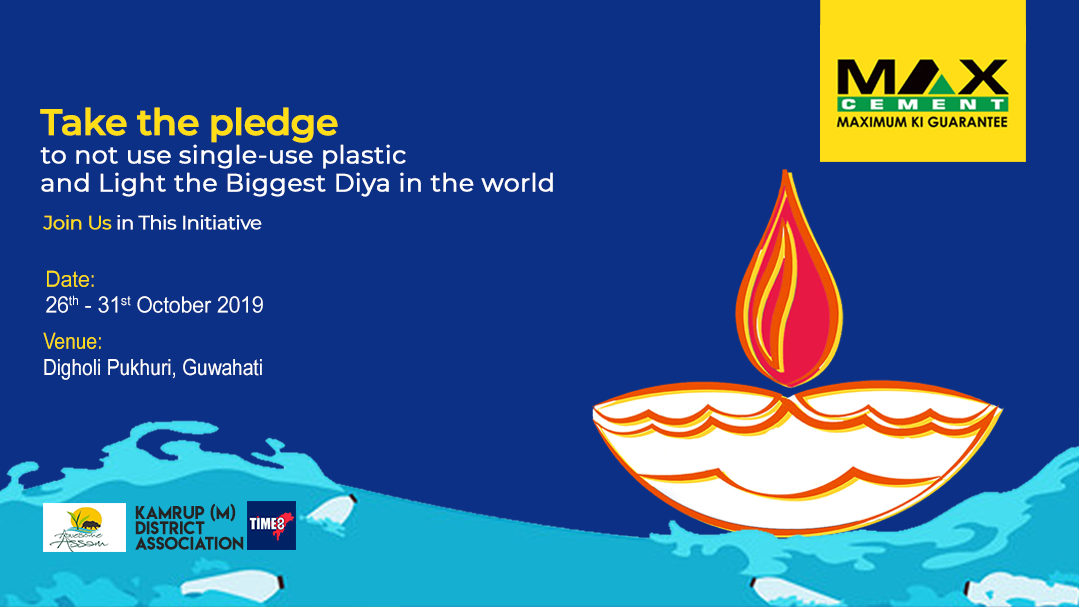This Diwali 2019, let’s be a part of something big!
Max Cement and Times8 in association with Kamrup (M) District Administration and Assam Tourism are proud to present to you the world’s biggest eco-friendly Diya that aims to create awareness about the harmful effects of single-use plastic in the environment. The Diya is about 8ft in diameter, 2ft in height and has an oil storage capacity of about 200 litres.
The Diya will be lit on 26th evening on the joyful occasion of Diwali, the festival of lights, marking the beginning of the revolution that is in tune with the government’s pressing demand to ban the use of plastic by 2022 and adopt greener alternatives. The ceremony will begin in the honorary presence of social activists, spiritual leaders, celebrities and other eminent personalities and the Diya of change will burn till the 31st of October.
Impact of plastic pollution

Why can’t we abandon plastics?
Plastics have been a part and parcel of our lives. Starting from food packaging to fabrics, plastic can be found in almost everything. However, did you ever give a thought to what happens to the plastic items that we discard?
The plastic items that we discard eventually find their way into the oceans. Though plastic pollution has always been a serious issue, the use of plastics is still on the rise as many of us are not ready to give up the convenience of using these products.
How much plastics waste are created by us every year?
Approximately 8 million plastic waste is dumped in the oceans every year. The dirty beaches, which were places of scenic beauty in the past, are a glimpse of the harm that we are doing to the oceans. Out of the total plastic waste, 60% of the waste is dumped by India. We produce approximately 56 lakh tonnes of plastic waste every year.
World statistics of plastic production & consumption?
- Global primary production of plastic was 270 million tonnes;
- Global plastic waste was 275 million tonnes – it did exceed annual primary production through wastage of plastic from previous years;
- Plastic waste generated in coastal regions is most at risk of entering the oceans; in 2010 coastal plastic waste – generated within 50 kilometres of the coastline – amounted to 99.5 million tonnes;
- Only plastic waste which is improperly managed (mismanaged) is at significant risk of leakage to the environment; in 2010 this amounted to 31.9 million tonnes;
- Of this, 8 million tonnes – 3% of global annual plastics waste – entered the ocean.
Indian Statistics of plastic production & consumption
The per capita consumption in India is still low compared to more developed countries. According to FICCI, Indians consume 11 kg of plastic per year in comparison to 109 kg by an average American. But this figure is estimated to rise in the coming years.
The solution to India’s problems with plastic waste can be addressed through targeted investments in recycling and ensuring sustained effort to cut down consumption.
DISCLAIMER : The information on the link has been taken from various sources.




